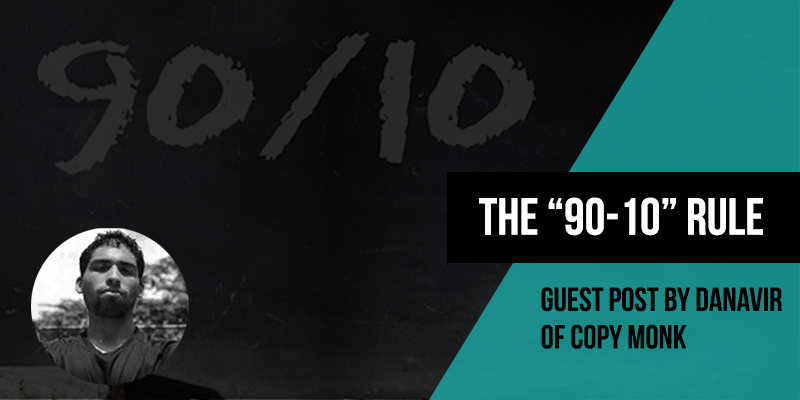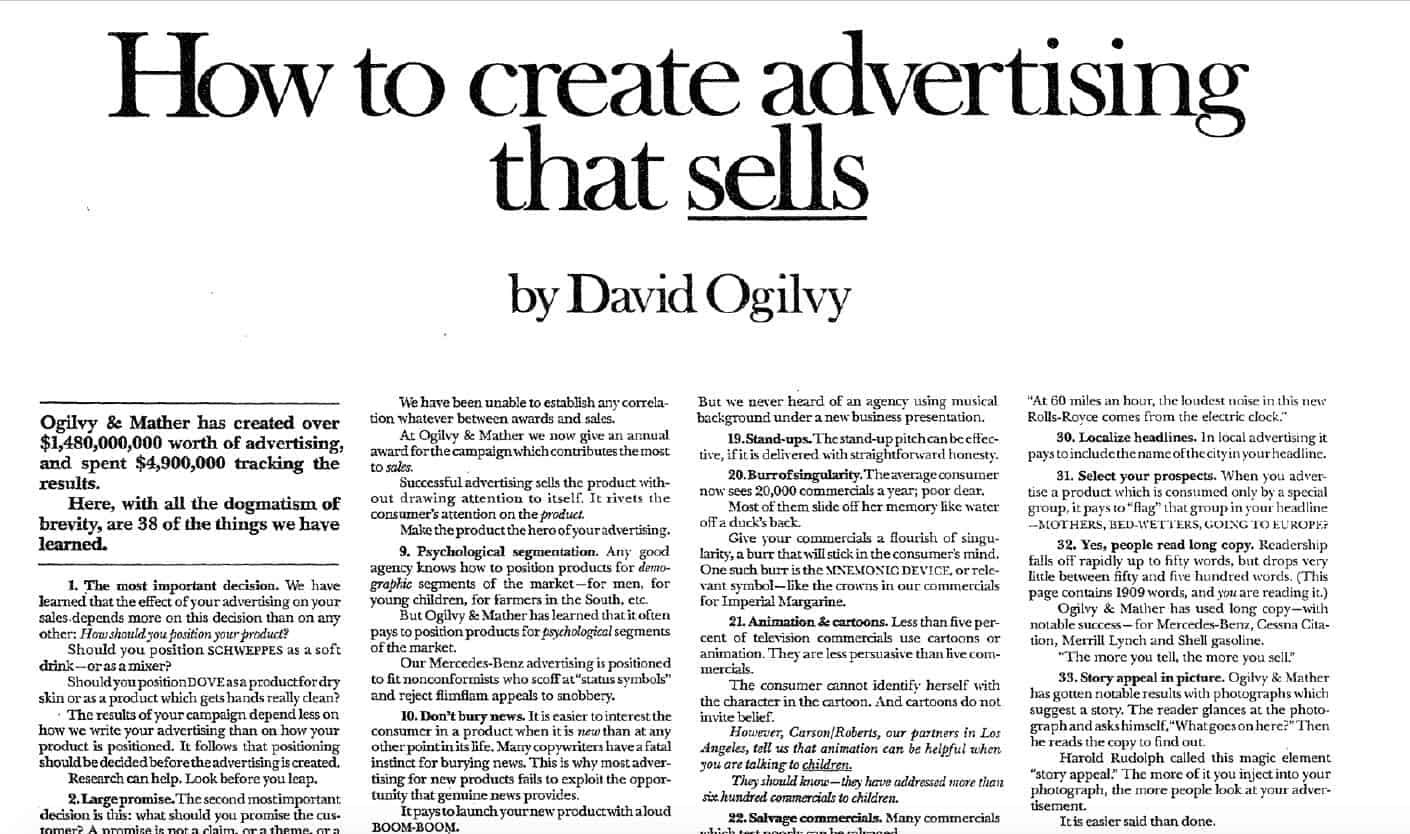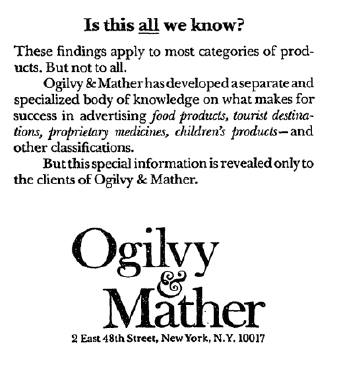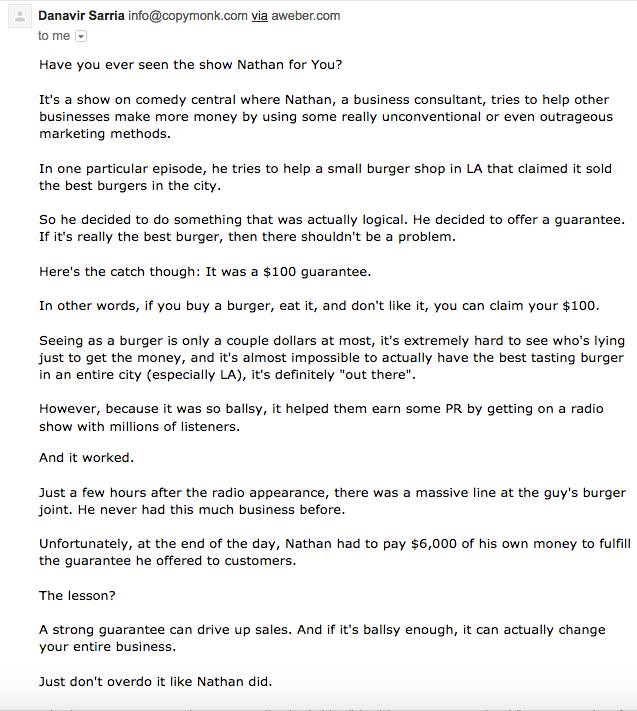This is a guest post by Danavir Sarria, the creator of CopyMonk.
“How do I write emails to my list without being pushy or salesy? I worked so hard to get them there and I just don’t want to annoy them or lose them”.
That’s one of the most popular questions I’ve gotten about email marketing ever since I started CopyMonk.
It’s a valid concern, of course.
You don’t want to ruin your relationship with your subscribers and burn out your list, especially since it’s the lifeblood of your business.
So the usual advice to avoid this is to limit the number of emails that you send and only send an email when you have some sort of sale going.
However, there’s a better way.
It’s totally possible to send out send out an email to your list every single day with a link to your product without being pushy or salesy.
In fact, your subscribers will love you even more for doing so.
You just need to know how to do it the right way by writing “CopyMonk-Style” emails. And one of the core principles of writing CopyMonk-style emails is the 90/10 rule.
What Is The 90/10 Rule?
The most important part of email marketing is to find a way to be a “welcomed guest” in your subscribers inbox.
With everyone’s inbox so flooded these days, mostly with promotional offers, it’s hard to stand out. Heck, many people even have 2 email addresses. One for “spam” and one for personal use.
If you just write emails like everyone else, you’ll be hated… or even worse, ignored.
So what you want to do is create the expectation that all of your emails are worthwhile to open. And you do that by following the 90/10 rule.
Without rambling on about it, the 90/10 rule is about the basic format of your emails as well as you email strategy.
You want the majority of your emails to be 90% content and 10% promotional. You also want 90% of all the emails you send to follow this 90/10 rule, with the other 10% being purely promotional.
Of course, it doesn’t need to literally be 90/10. It can be 80/20 or even 95/5. The point is, you’re delivering content while just mentioning your product when it’s relevant in every email.
The Catch? “How-To” Content Will Kill Your Results!
I had to write this section because it’s the biggest mistake people make once they finally “get” the whole 90/10 rule thing.
You see, while the 90 in the 90/10 rule does mean 90% content… it doesn’t mean that it’s all 100% educational, how-to content.
If you’re only sending an email a week or less, then that’s fine. In that situation, you’ll probably be best suited to hit them hard with actionable value.
But if you’re going to write emails at a higher frequency, like you should be if you want to maximize your results, you’re not going to get away with traditional “how-to” content.
Why?
Because traditional “how-to” content is actually boring. Sure, your list will love it for the first 2 weeks, but then they’ll start ignoring it.
It’s like that boring teacher back in highschool.
He’s super smart and will teach you a ton of stuff, but within 15 minutes of class starting, you’re already in the perfect position to take a power nap.
However, an exciting teacher will be the complete opposite. Yea, you’ll learn all of the same stuff in the same time span. But this time, you’re awake, attentive, and probably even enjoying yourself a bit.
You see, content itself is not valuable.
Only the experience of consuming and using that content is valuable.
So instead of writing just boring “how-to” content all the time, what you want to do is to start writing “infotainment-style” content.
That’s when you combine both educational content with entertainment so that it’s easier and more enjoyable to consume.
Kind of like when people put cheese on their broccoli. It just makes the experience a lot better than if it was just the broccoli.
The Easy Way To Write Highly Valuable, “Infotainment-Style” Email Content
Thousands of years ago, before writing was invented, we used to share information in a particular way.
This particular form of communication was used to pass down all sorts of important information including things like morals, religion, culture, and more.
It was ideal since it was so easy to remember things this way and was naturally captivating to anyone who listened to it. In fact, you can say we’ve been hard-wired to both consume and share information this way.
Best of all, it works with everyone.
So what is this mysterious way to share information?
Stories.
See what I did there?
The best way to write “infotainment-style” content for your list is by educating people by telling them a story that contains the valuable content within it. Not only that, but stories also make the content seem more valuable than it would normally seem like, but that’s a story for another day.
For today, I want to direct you to particular type of story… personal stories.
While there are a ton of ways to write stories, the easiest and fastest way to get started is by writing about personal stories that relate to the content you’re really trying to get across.
For example, lets say I’m selling sports supplements.
I could just write emails about the 5 reasons why whey protein is so important for muscle recovery and muscle building. However, that’s a bit boring.
Instead, it would be a lot better to talk about the last time I was struggling to build muscle and a bodybuilder at the gym told me that the reason I wasn’t getting results was because I wasn’t consuming enough protein.
Then from there, I could go on about how I asked this guy why it mattered and how I confirmed advice after scowering the web to see if he was right.
THEN I would talk about the 5 reasons the guy talked about.
As you can see, writing emails this way is a lot more interesting as you’re not relying on boring content. If fact, everything that you teach with a personal story will automatically become interesting.
How To Effectively Sell Your Product In The Last 10% Of Your Email
So here we are, the most important part of your email.
Fortunately, if you did everything else right, this is also the easiest part of your email.
That’s because you’re not hard-selling anything. Instead, you’re going to use the same tactic David Ogilvy, probably the most popular advertiser ever, used to sell billions of dollars worth of products.
You see, David Ogilvy is considered the father of “soft-selling”.
What’s that? Well, that’s basically when you sell something without pushing it. Almost always, it’s just a mention of your relevant product or service.
The most famous example of this was with the house ads David Ogilvy wrote to promote his ad agency, Ogilvy & Mather. They were wildly successful leading, so they led to lots of copycat ads.
If you notice the very bottom right of his ad, he talks about Ogilvy & Mather, but doesn’t pressure you into becoming a client.
In fact, in his case, he doesn’t sell you on it at all. He says the only ones who gain access to all his other great content are his clients.
So if you liked his ad, then you would naturally want to become a client to find out more.
Now, in the case of your email, we’re not going to be so “soft” about it either. You’re still selling your product. The difference is that you want to tell people why they should buy your product in just a couple of sentences.
Anymore then that is too hard and anything less then that is not hard enough. You want to be in that “goldilocks” area during this part of your email.
Do this every email and your list will never mind it. In fact, they’ll probably love you for it since you’re making it easy for them to buy something if they’re interested.
An Example Of The 90/10 Rule In Action From CopyMonk Daily
Since this whole 90/10 rule is probably new to you, it would be best to actually see a real example of this.
So I’m going to show you 1 example from CopyMonk daily, which is my daily email marketing newsletter for business owners.
Notice how I use story to ultimately teach something and then pivot into a sale without ever being pushy or salesy.
Check this out:
In this email, I’m talking about what happened in a particular episode of Nathan For You. You can read the email for all the details, but realize how you don’t see me teach anything until I’ve given it context by talking about the show.
Then, I end the email with a call to action to my product.
In this case, I’m connecting my educational content with something I teach inside my course, This builds curiosity and leads to an easy and non-spammy transition from content to promotion.
Like I said, this is my daily newsletter. So I write emails like this to my list every single day. Yet, even though I sell in every email, people love getting my emails.
Conclusion
Most business owners suck at email marketing.
Fortunately, if you follow the advice in this article, you’ll be a lot better off. Not only will you sell more products, but you’ll also build a deep relationship with your list at the same time.
Now that’s what you call a win-win.
With that said, If you want a 100% free, 1-page checklist that summarizes my entire CopyMonk methodology to writing emails, then click here.
Danavir is the founder of CopyMonk, where he helps business owners double their sales with email marketing.









Trackbacks/Pingbacks